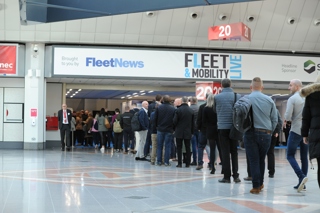Longer replacement cycles bring benefits through lower costs, but there are also potential risks, including higher maintenance costs, lower residual values, greater levels of vehicle damage and unhappy drivers.
Fleets suggest that greater levels of reliability among most fleet cars mean maintenance shouldn’t be too much of a concern, as long as drivers treat vehicles properly.
Tristan Campbell, fleet adviser to Chivas Brothers, operates company cars for four years and vans/pool cars for five years.
He says: “Each fleet will be different, but for the average mileage and use patterns of the vehicles on our fleets this is what works best for us.
“For the premium badge vehicles we have on our fleet, as long as they are looked after well, serviced regularly and properly maintained, they remain very reliable, safe, and just as much a pleasure to drive as when they were new.”
John Davidge, head of fleet technical at Cardinus Risk Management, adds: “Modern vehicles are perfectly capable of achieving high mileages and giving good service if they are properly looked after and driven well.
“Often the most unreliable component in the vehicle is still the one behind the wheel.”
Outright purchase offers flexible approach to replacement
In a changing economic climate, the solution of many fleet operators has been to keep the fleet flexible.
Within the broad policy frame of set replacement cycles, proactive fleet managers make day-to-day decisions on vehicle acquisition based on a variety of factors, including running cost reports, the needs of the business and the varying requirements of drivers.
This ‘fluid’ fleet policy approach is ideal for managing ongoing service maintenance and repair costs, according to Bob Sanders, transport manager for Barnardos, which operates 150 cars and 57 vans.
The fleet has a range of replacement cycles depending on the vehicle category, with cars replaced at four years/80,000 miles, panel vans at three years/120,000 miles, Luton vans at four years/80,000 miles and minibuses at seven years/ 80,000 miles.
Sanders says: “The timescales operate on a fluid basis. If any vehicle is underspent on SMR then it may stay on the fleet longer. Equally, if it performs badly then it may be de-fleeted earlier.
"We are an outright purchase fleet and the advantage there is that we can do what we want when we want without being at the beck and call of a leasing company.”
This flexible approach isn’t just important because of internal considerations, as external factors are also having an impact, particularly when it comes to acquiring cars.
Gratte Brothers, which has an outright purchase fleet of 160 cars and vans, extended its replacement cycles at the start of the recession, increasing the holding period of its fleet from three years/80,000 miles to four years/100,000 miles.
Deputy group facilities manager Danny Alborough would like to replace vehicles more often, but that is easier said than done.
“Manufacturer lead times are getting so long,” he says.
“For instance, the average lead time for some of our suppliers is now 16 weeks, when it used to be eight to 10 weeks.
“I currently have 32 vehicles on order with delivery dates as far away as May.”


















Login to comment
Comments
No comments have been made yet.